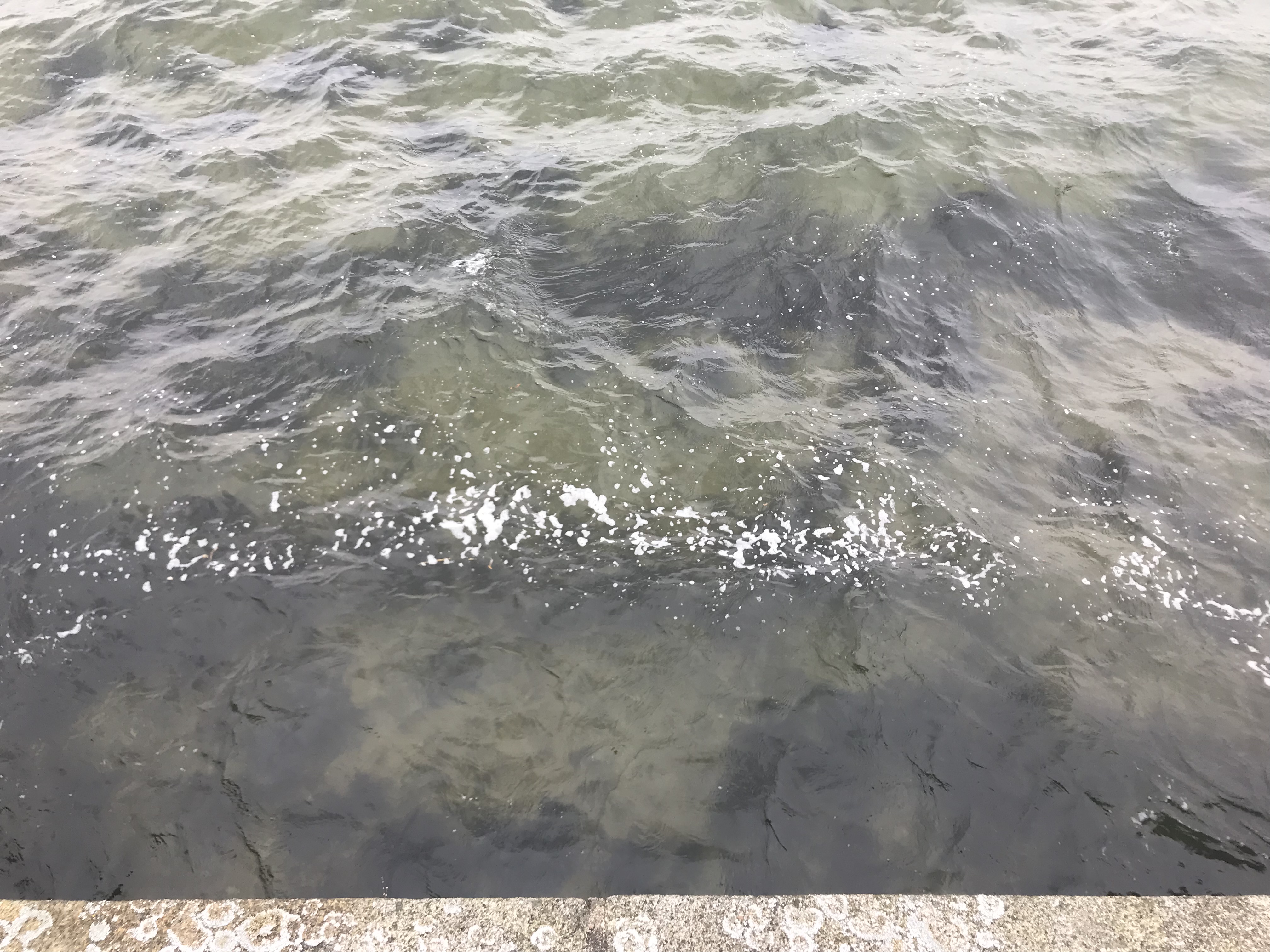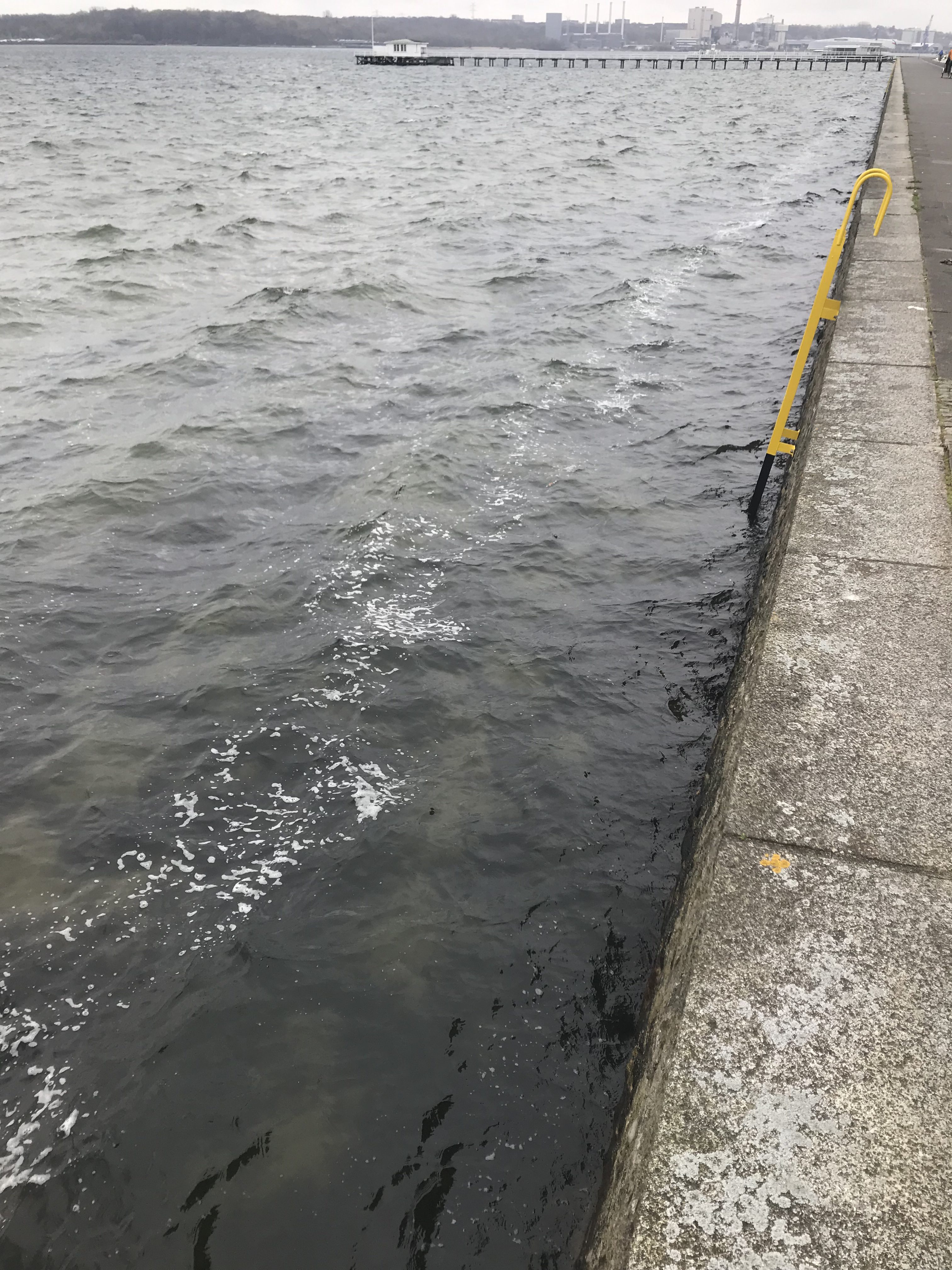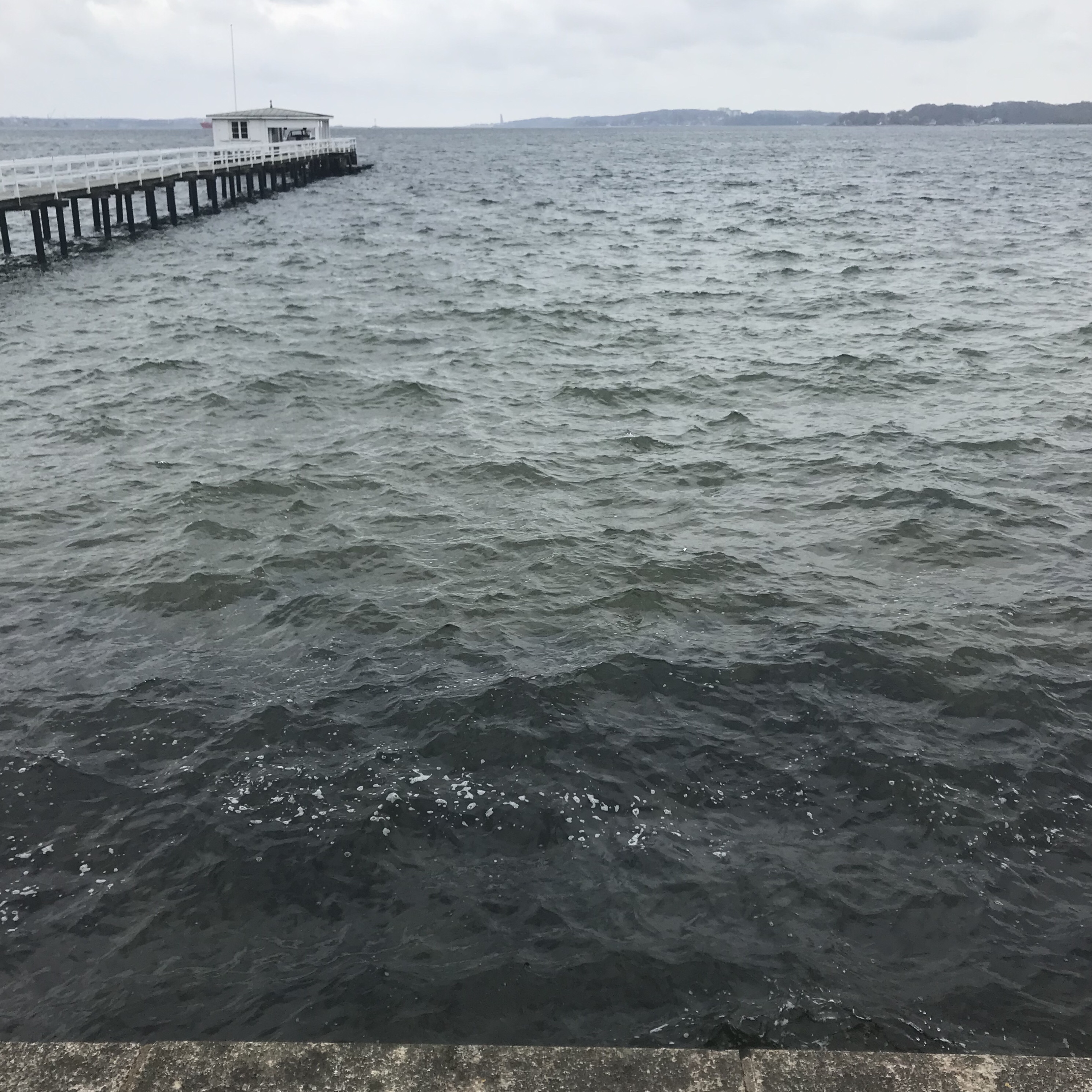You see them a lot here on Kiel fjord when it’s windy, and this is what they looked like last Saturday: Foam stripes than run parallel to the coast for as long as the coast is a sea wall (or at least something fairly straight). What’s going on there?

I have seen them over and over again, and the most common explanation that people have is Langmuir circulation, which i don’t actually think it is (and I show you some evidence for why I don’t think they are Langmuir circulation in this blog post). The stripes we see here are nowhere near parallel to the wind direction. Last Saturday, they were pretty much perpendicular.

So I think there is just a surface convergence there, parallel to the coast, probably related to the typical wavelength. So the question should probably be: Why is there a convergence parallel to the coast independent of the wind direction? What do you think?


Moin,
my theory: kind of a standing wave.
Waves get reflected by the wall, and thats where the gas bubbles are made. Then there may be some interference between the original and the reflected waves, that produce a standing wave knot right there where the foam is…
Martin
Yes, I thought so, too, except that when looking at the waves, there doesn’t appear to be a node there. But there must be, otherwise how would one explain the foam collecting there, and it collecting at the same distance from the coast everywhere? It must be a wavelength thing…
P.S.: Great to hear from you :-)